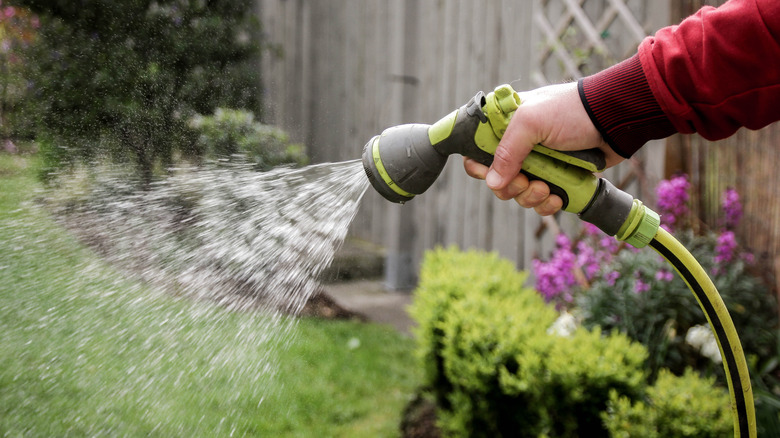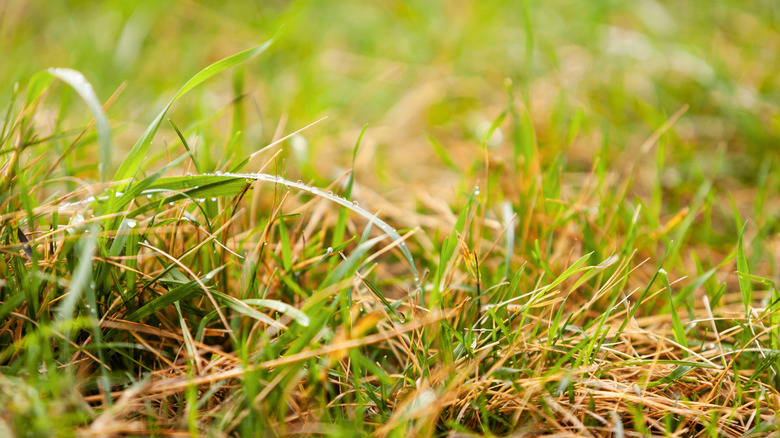How To Tell You've Been Watering Your Lawn Too Frequently
Do you dream of a lush, emerald green lawn, only to find yourself constantly battling soggy patches and yellow blades? You might be guilty of one of the most common mistakes in lawn care that's damaging plant roots and attracting pests: overwatering. While it seems counterintuitive, giving your grass too much water can be just as detrimental as not giving it enough. The truth is, a healthy lawn actually thrives on deep, infrequent watering. This encourages roots to grow deeper into the soil, making them more resilient to dry spells and promoting a stronger, healthier appearance.
If your sprinkler system is on a daily schedule or if you're outside with the hose every afternoon, it's time to reassess. Recognizing the signs of overwatering is the first step towards a healthier lawn that requires less maintenance and can stand up to environmental stressors. Let's explore how you can identify if your lawn is getting more hydration than it needs and how to help your grass look greener.
The obvious signs: yellowing grass and mushy soil
One of the clearest signs of an overwatered lawn is its appearance. Instead of the vibrant green of an ideal lawn, the grass may be a sickly yellow or even a light green hue. This isn't usually a sign of nutrient deficiency, but a symptom of suffocated roots. When the soil is constantly saturated, the air pockets within it are displaced by water, depriving the roots of oxygen. Without enough oxygen, the grass struggles to absorb nutrients, leading to discoloration. Typically, the fastest fix for a yellow lawn is to modify the watering schedule.
Beyond the visual cues, the feel of the lawn's soil can also tell a story. If the ground feels constantly squishy or soggy, even hours after watering, it's a good sign that there's excessive moisture. Standing water or areas that remain perpetually damp are red flags. This constant wetness not only chokes out the grass but also creates an ideal breeding ground for fungal diseases, which can show as brown patches or mushroom growth.
Excessive thatch buildup, a dense layer of living and dead organic material between the grass blades and the surface of the soil, is another sign of overwatering. Constant moisture from frequent watering creates a welcoming environment for microbes that decompose organic matter. It can lead to a matted layer that smothers grass and prevents proper air and nutrients from getting to the grass and the soil.
Pests, weeds, and recovery strategies
The problems associated with overwatering go beyond just the appearance and feel of your grass. A persistently wet environment is very attractive to all types of unwanted guests. Certain lawn pests, like grubs and mosquitoes, thrive in moist conditions. Grubs, in particular, feed on grass roots, and their presence can be exacerbated by overwatering since it weakens the turf, making it more vulnerable. A waterlogged lawn also provides a welcoming home for various types of weeds that love damp soil. Weeds like sedges and various types of moss thrive in perpetually wet conditions, outcompeting the grass for resources. Reducing watering frequency will not only promote healthier grass but also make your lawn less inviting to bugs and pests, ultimately saving you time and effort in the long run.
To rescue an overwatered lawn, begin by reducing the watering frequency. You generally only need to give your lawn about an inch of water each week. A common hack to figure out how much water the lawn is getting is to place a shallow pan or bowl where the sprinkler hits and measure how much water is in the pan at the end of 30 minutes. It's recommended to split watering sessions into two per week, so each session should provide about half an inch of water. To improve drainage and allow oxygen to reach suffocated roots, consider aerating the lawn, which involves creating small holes in the soil. Raking the grass to de-thatch any excessive buildup can also help the problem. By recognizing the signs of overwatering and taking an active role to reduce moisture in the soil, you'll encourage healthier root development and a more resilient lawn.


